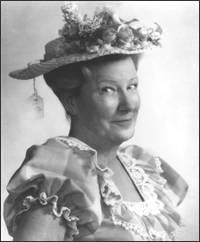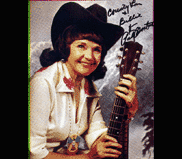
| UNITED WE STAND | Country News Of The Day | Country Star Photos | Country Star Photos 2 | Favorite Links | Classic Country Links | Classic Featured Artist | FEATURED ARTISTS 2 | Remembering The Classics | Remembering the Classics 2 | The Sons Of The Pioneers | BILL MONROE | My Friends Banner's Page | MY BANNER PAGE | Guest Room | WebCams Page | ||
| Welcome To My Country Classics Site | ||
| Remembering The Classics | ||
 Traditional Country Traditional Country is a nebulous term -- it can refer to anything from Roy Acuff's simple songs to the electrified honky tonk of Johnny Paycheck -- but the name does evoke a specific sound, namely the long-standing tradition of simple country songs delivered with simple instrumentation and a distinct twang. The era of traditional country didn't begin until the early '30s, when Jimmie Rodgers became the first national country music star. Rodgers brought the formerly rural music into the industrial era by streamlining the music and lyrics; in the process, he made the genre a viable commercial property. Following Rodgers' success, old-time music faded in popularity and traditional country was born. For the next 40 years, most country music fell under the traditional country umbrella, regardless if it was the big-band dance music of Western swing or driving roadhouse honky tonk. The majority of the popular artists from the '30s and '40s -- Acuff, Eddy Arnold, Ernest Tubb, Hank Williams -- became the foundation of the Grand Ole Opry, a weekly radio broadcast that became the definitive word of country music. This generation of musicians inspired all the artists that emerged in the following two decades, who put their own spin on traditional country. Following the emergence of rock & roll, country music began to incorporate more pop production techniques, and although this Nashville sound was smoother than the music of the '40s and early '50s, it still conformed to the conventions of traditional country. During the '60s, mainstream country became progressively more pop-influenced, yet traditional country held strong until the early '70s, when country-pop became the dominant form of country music. Many fans of hard country turned toward the tougher sounds of progressive country and outlaw country, yet most of the country audience continued to listen to country-pop, especially since traditional country singers like George Jones, Conway Twitty, and Loretta Lynn had turned toward that subgenre. By the late '70s, most new country singers were either raised on country-pop or pop/rock, and consequently, the reign of traditional country came to an end. During the mid-'80s, a wave of new-traditionalist singers such as George Strait emerged, but their music tended to be influenced by contemporaries as well, making the movement as much an evolution as a revival. Here You Will Find stories on Minnie Pearl,Roy Acuff,Patsy Cline,Patsy Montana and Dale Evans! Please do enjoy!  MINNIE PEARL Minnie Pearl : Biography When a very nervous 28-year-old comedienne told her first joke on the WSM Grand Ole Opry on Nov. 30, 1940, she didn't know whether she would be invited to return for future performances. She was. And, for over 50 years, she continued to entertain fans with tales of Brother and all the folks from Grinder's Switch, Tenn. Minnie Pearl was paid $10 for that first performance on the Opry. Never having been before a microphone, she was, by her own admission, scared to death. Grand Ole Opry founder George D. Hay, the Solemn Old Judge, recognized her fright and gave her some advice she would remember and share with others through the years. "Just love 'em, honey, and they'll love you right back," Judge Hay told the young comic. She received more than 250 pieces of mail from that first performance. A week later, Miss Minnie was invited to become a regular Opry cast member. Minnie's first professional performance in costume was in 1939 before the Pilots Club in Aiken, S.C. She bought her whole costume at a salvage store there. When she began performing on the Opry the following year, Minnie did so in a hat without the now familiar price tag. She probably started wearing the price tag in 1942. She decided on the $1.98 price because she thought that's what the hat cost in 1939. Minnie also collected many stories over the years, some of which were recorded in the 1940s and 1950s. "(The character Minnie Pearl) has withstood the rigors of time because probably she's no threat to anybody. She's not pretty. She's not sexy. She's not smart, and people just sort of think they're safe with her. Wives know that their husbands are not going to flirt with her," explained the woman whose real name was Sarah Ophelia Colley Cannon. Her friends called her Minnie though, because that's what she prefered. "I've been Minnie longer than I've been Sarah," she used to explain. Clad in a gingham dress and white stockings, Minnie entertained throughout the world, working tirelessly for charitable causes while winning numerous awards. Her efforts for the American Cancer Society, coupled with a personal bout with breast cancer in 1985, led her to being named the 1987 recipient of the Society's National Courage Award. That same year she won the Roy Acuff Humanitarian Award for Community Service. Among her many other honors was her selection as the first comedienne inducted into the Country Music Hall of Fame in 1975. In 1988 she was the first recipient of the newly created Minnie Pearl Award, now presented annually by The Nashville Network. Minnie died on March 4, 1996. 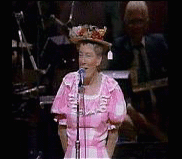  Roy Acuff 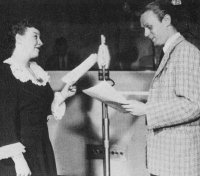 Roy Acuff, "King of the Hillbillies," "Backwoods Sinatra," "Caruso of Mountain Music," sold more records than any other country star in the '30s and '40s. His image was so powerful that legend has it that Japanese troops would scream "To Hell with Babe Ruth- To Hell with Roy Acuff" as they entered a battle; however untrue the story may be, Acuff was the star of country music during its early days. Acuff was born in Maynardsville, TN and was a minor league baseball player before an injury ended his career. In the wake of his disappointment, he began learning to play his father's fiddle, and soon began playing with a traveling medicine show. Acuff and the other musicians drew crowds to the show, as it traveled through the South, so that the doctor could hawk his concoction. In 1934, Roy and his band the Crazy Tennesseans began auditioning for WNOX in Knoxville, TN and WSM's Grand Ole Opry in Nashville. They quickly gained a following and earned an opportunity to record. They also began experimenting with popular crooning styles mixed with traditional sounds, but Acuff was more inclined to hillbilly music. In 1936, he recorded "The Great Speckled Bird"- the song that would make him famous. In 1938, Acuff and his band finally got the opportunity to perform on the Opry when they were asked to fill in for Fiddling Arthur Smith (who was dealing with a drinking problem). Acuff performed "The Great Speckled Bird" in his new crooning style and did not expect to get asked back. When the Opry needed another fill-in, Alton Delmore, who had been impressed with Acuff's eagerness, recommended him. This time the band performed the same song in a style that suited Acuff, "hard-core hillbilly." Acuff was an instant success and soon joined the Opry as a featured performer. Soon after, he recorded "Wabash Cannonball," and as his popularity grew, he solidified the Grand Ole Opry and WSM as the center of country music. Acuff and his (renamed) Smoky Mountain Boys did not just perform hillbilly songs; they gave a complete stage show, including vaudeville/minstrel-style skits and slapstick. As his popularity grew, Acuff eliminated the "progressive" members of his band- those who advocated the crooning and jazz influences- and replaced the pop-oriented and risqu love songs. He refashioned the band as an old-time string band and added more traditional sounding and religious songs to their repertoire. Despite their rustic image, Acuff did make some innovations; he introduced the dobro, which added a popular Hawaiian sound, to the hillbilly string-band. Acuff continued recording and performing on the Opry well into the 1990s. He also ran for Governor of Tennessee in 1948; the current Gov. had declined to attend an Opry party because he felt that Acuff was personally responsible for turning Nashville into the hillbilly capitol of the World. Acuff announced his plans on the Opry, and toured the state seeking support from those maligned by the Governor, but he lost the race.   PATSY CLINE Click on Above Piture to go to Site! 6 Million Sold - 1995 Patsy Cline's Greatest Hits #1 Juke Box Record "Crazy" #1 Female Artist 1961 and 1962 #1 Song of 1962 "I Fall to Pieces" Celebrating PATSY PATSY CLINE, (Virginia Patterson Hensley), was born in Winchester, Virginia, on September 8, 1932. The family home was in nearby Gore. Legend has it that she was entertaining her neighbors as early as age 3! Her natural talent and spirit took her to the top of the country charts in 1962, and her style and popularity has never waned. Patsy's big break came when she won an Arthur Godfrey Talent program in 1957 with the hit Walkin' After Midnight. From there she pursued a recording career appearing at the mecca of country music - the Grand Ole Opry in 1958, and received national awards in 1961 and 1962. Country music lost a magical entertainer when her career was ended in an airplane crash in Tennessee, in 1963. In 1973 Patsy was elected posthumously to the Country Music Hall of Fame, and her reputation is on record as one of the major female vocalists of all time. A bell tower has been erected in her memory at the Shenandoah Memorial Park, where Patsy Cline is interred. Several Highways, including the Patsy Cline Memorial Highway, Route 522, and Patsy Cline Boulevard in Winchester, have been named to commemorate her life. More Recent Recognition 1972 Country Music Hall of Fame Induction Grand Ole Opry, Nashville, TN 1987 Award in Appreciation for Outstanding Contribution in Country Music Virginia Country Music Association 1992 Grammy Awards Recording Hall of Fame Induction for "Crazy" Patsy for singing, Willie Nelson for writing 1993 Commemorative Patsy Cline Stamp US Postal Service 1994 National Cowgirl Hall of Fame Induction Ft. Worth, TX 1995 Grammy Award for Creative Contribution of Outstanding Artistic Significance to the Field of Recording National Academy of Recording Arts & Sciences, Inc., Los Angeles, CA 1995 Greatest Hits Album Sold Six Million Copies On the billboard charts for over 8 years. Patsy Cline Box Set was certified Gold with over 1/2 million copies sold. |
||
|
|
||
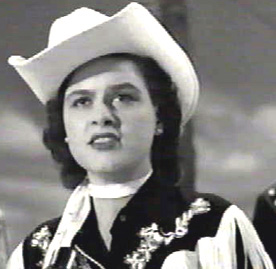  Patsy Montana Patsy Montana AKA Ruby Blevins Born Oct 30, 1914 in Hot Springs, AR Died 1996 Years Active Genres Country Styles Yodeling, Cowboy, Traditional Country Instruments Vocals Tones Plaintive, Sentimental, Poignant, Earthy, Earnest Labels Cattle [Germany] (3), King (2), Columbia (2) See Also Patsy Montana & the Prairie Ramblers One of the true pioneers of country music was Patsy Montana, the original yodeling cowgirl. She was the first woman in country music to have a million-selling single 1935's "I Want to Be a Cowboy's Sweetheart" and was a mainstay on WLS Chicago's National Barn Dance for over 25 years. In the '30s and '40s she was the sweetheart of many a movie cowpoke, appearing in numerous Western films, and her success encouraged the traditionally male-oriented country music business to welcome and respect the scores of female performers that followed her. Patsy Montana was born Ruby Blevins in Hot Springs, Arkansas, the eleventh child and first daughter of a farmer. She was influenced early on by the music of Jimmie Rodgers, and as a child learned to yodel and play organ, guitar, and violin. In 1930, she moved to California with her older brother and his wife. Montana won a talent contest there and began appearing on a local radio station as "Ruby Blevins, the Yodeling Cowgirl from San Antone." She continued in radio with country-western star Stuart Hamblen as part of the Montana Cowgirls. Two years later, she returned to Arkansas for a visit and wound up in a recording session at Victor with Jimmie Davis. She recorded four of her own songs under the name "Patsy Montana" Hamblen called her Patsy because he liked Irish names and her signature song was "Montana Plains." In 1933, she began singing with the Prairie Ramblers, who became her backup band, at WLS Chicago and then became a regular on the National Barn Dance. She also cut many records; 1935's "I Want to Be a Cowboy's Sweetheart" became her signature song, but it was not her only hit; others included "Rodeo Sweetheart," "I Wanna Be a Western Cowgirl," "Back on the Montana Plains," and "I Want to Be a Cowboy's Dream." In 1939, she made her full-length feature film debut with Gene Autry in Colorado Sunset. Montana moved to Decca in 1941 and released only 12 songs over the next four years. Following World War II, audience tastes shifted towards honky-tonk, so Montana's yodeling cowgirl style was not as popular as it was in the '30s. In 1948 she returned to Arkansas to live on a farm with her husband and two children, appearing on the radio daily in Hot Springs and on many Saturdays on the Louisiana Hayride. Later she and her husband moved back to California. Over the years, Montana remained active in the music industry, appearing on many country music shows. In 1964, she cut a live album at the Matador room in Safford, Arizona; among her bandmates was a young guitarist named Waylon Jennings. In the '80s and '90s, she recorded albums for a number of independent labels before her death on May 3, 1996. Sandra Brennan Similar Artists: The Prairie Ramblers Callahan Brothers Tex Owens Cliff Carlisle Roots and Influences: Jimmie Davis Jimmie Rodgers Gene Autry Followers: Marcia Ball Molly O'Day Performed Songs By: Johnny Mercer Stuart Hamblen Gene Autry Worked With: Back in the Saddle Again  Dale Evans AKA Francis Smith Born Oct 31, 1912 in Uvalde, TX Died Feb 7, 2001 in Apple Valley, CA Years Active Genres Country Styles Country Gospel, Cowboy Instruments Vocals Tones Sweet, Gentle, Amiable/Good-Natured, Innocent See Also All Movie Guide Entry Crowned "Queen of the Cowgirls," Dale Evans stands out as the most powerful female presence in cowboy culture throughout the 20th century. Evans was born Frances Octavia Smith, October 31, 1912, in Uvalde, Texas. At age 14, she eloped with her high school sweetheart. A year later, she found herself in Memphis, TN, a widow and single parent, pursuing a career in a music. The station manager at radio station WHAS (where the aspiring star was working as a staff singer) encouraged her to change first her name to Dale. The surname Evans came about as Joe Eaton felt it was "euphonious" and would roll easily from the lips of announcers. As Dale Evans, she traveled to Chicago, became a vocalist with a number of different big bands, and was eventually hired as staff singer for radio station WBBM, the local CBS affiliate. Talent scouts from Paramount Studios discovered her and arranged a screen test in Hollywood for the movie Holiday Inn, starring Fred Astaire and Bing Crosby. She didnt get the part, but the screen test found its way to 20th Century Fox studios where she received a one-year contract. Herbert Yates, head of Republic Studios, was inspired by the successful stage play Oklahoma, and decided to expand the female lead in westerns and adopt this format for one of his biggest stars, Roy Rogers. Since Evans was from Texas, Yates figured she could surely rope 'n' ride, and subsequently offered her a starring role in The Cowboy and the Seorita the first of 28 films Roy Rogers and Dale Evans would make together. This on-screen team became a real life romance, and they were married in 1947. In 1950, Evans wrote the song most closely associated with the cowboy fascination of the '50s. "Happy Trails to You" was written while preparing for a radio show; scribbling on an envelope, Dale wrote the famous lyrics and taught the medley to Rogers and the Sons of the Pioneers forty minutes before show time. The song eventually served as the closing song for their half-hour television series, The Roy Rogers Show, which ran until 1957. Evans remained active throughout the rest of her life, co-writing more than 400 songs, including the immortal western classic "Hazy Mountains," and the Sunday School standard "The Bible Tells Me So." She also authored several books, co-founded The Happy Trails Childrens Foundation for severely abused and neglected children, is a member of the Cowgirl Hall of Fame, and has an impressive three stars on the Hollywood Walk of Fame. Roy Rogers died in 1998 from congestive heart failure at the age of 86, and after a series of medical problems, Dale Evans followed him into the sunset three years later. Her memory stands not only as a fiery whip-smart cowgirl, but as a gifted songwriter and a warm humanitarian who shone with an earthy spirituality and a twinkle in her eye for the entire length of the long and dusty trail. Zac Johnson Similar Artists: Bill Carlisle Formal Connections: Roy Rogers Performed Songs By: Norman Luboff Traditional Bob Nolan Dan Kelly Worked With: The Sons of the Pioneers The Whippoorwills 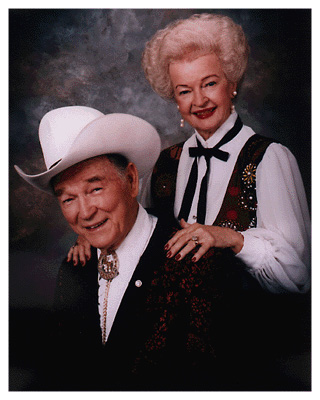  Thank You for stoping By,Hope to see you again real soon! ************************************************************ PLEASE CHECK OUT MY OTHER PAGES ON THIS SITE! Any problems viewing this site? Dead links? Please let me know! Suggestions? Comments? Complaints? If you get any errors or missing photos, broken links, etc, please let me know! |
||
